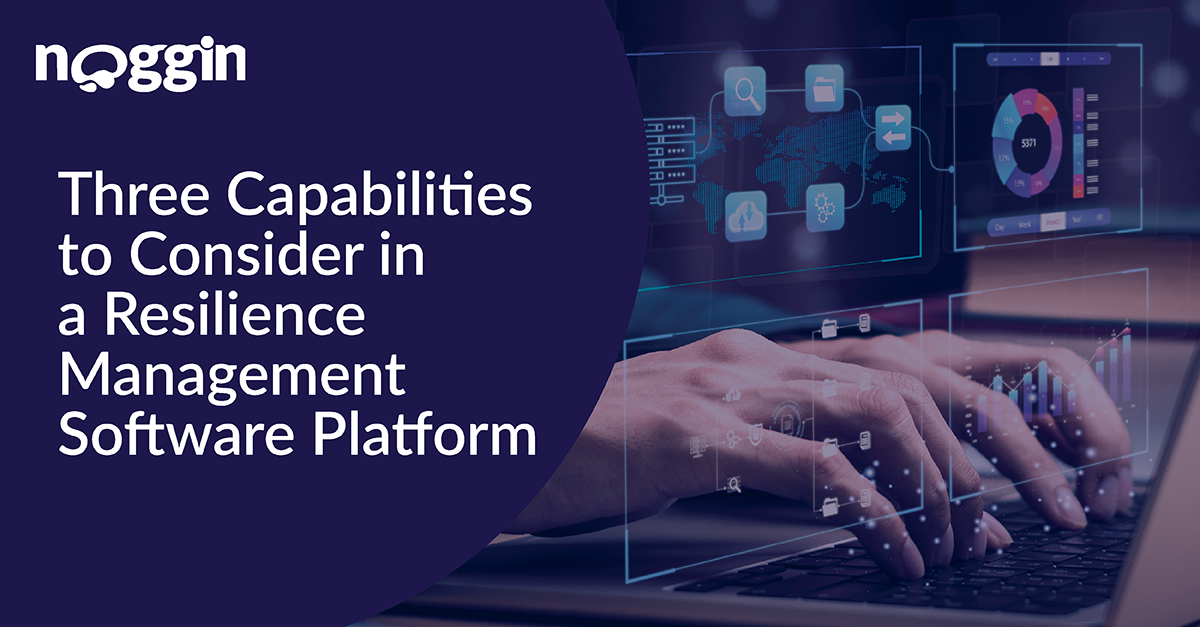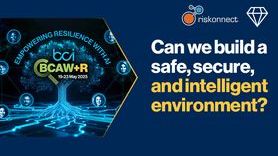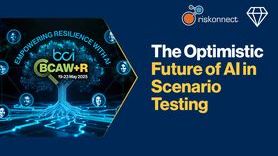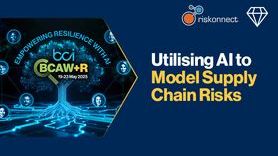Three Capabilities to Consider in a Resilience Management Software Platform

Nowadays, quickly adapting to disruptions while maintaining continuous business operations and safeguarding people, assets, and brand equity requires a more serious commitment to resilience management than ever before. Organizations are, therefore, being forced to ask themselves if they have the capabilities in place to build thriving resilience programs.
For the majority that doesn’t, integrated resilience management software should help. But not all software is created equal.
What capabilities matter most to achieve resilience aims? These are three capabilities to consider in a resilience management software platform.
1. Integrates related use cases. An integrated digital solution should cover all aspects of resilience management, including incident and crisis management, situational awareness, business continuity, risk and compliance, security operations, and threat intelligence.
Why integrated? Integrated resilience management technology ensures that all necessary capabilities are in one place. To put a finer point on it: resilience data, reporting, and analysis are all consolidated, becoming available to users across the entire lifecycle.
Besides eliminating information silos, this level of integration provides a consistent user experience. Practitioners manage any type of event with familiar tools and workflows. And not just any type, but any scale, too – from routine to crisis, with the cumulative effect being the lowering of total cost of ownership (TCO).
2. Provides process automation. Your resilience management platform should also make life easier. Needed, as such, is a platform with a powerful workflow engine. This engine will allow Managers to automate key resilience tasks, by building their own workflows with notifications, business rules, approvals, and much more. Relevant capabilities to consider include:
- Automated BIA (Business Impact Analysis) reports, BCPs (Business Continuity Plans), and recovery-strategies’ approval process
- Automated notifications to prioritized business activity owners whenever the RTO (Recovery Time Objective) is changed on a business asset their activity is dependent on
- Pre-configured workflow for incident escalations. Once an incident is created, and the severity changes from Critical, High, Medium to Low, different voice messages, emails, and SMS notifications are triggered.
- And once a BIA or exercise is completed, the next one is automatically scheduled, removing the risk the user will forget it.
3. Expedites the BIA. The BIA remains a mainstay exercise in resilience management. And so, your resilience management platform should work with forward-looking Managers to make the exercise more agile and pleasurable for all involved.
To that end, the platform should make the BIA process as simple and efficient as possible, with the aim of promoting greater usability across the entire organization. To do so, such a platform should have an easy step-by-step guide on its BIA dashboard to help guide stakeholders through the process. The relevant functionality should look like this:
- The BIA dashboard provides a helpful snapshot of the BIA, with key information such as status, due date, and who the owner of the BIA is.
- Adding a new prioritized activity is easy. A simple, intuitive interface guides team members, highlighting what information needs to be entered, so that users won’t find the process laborious or complicated.
- Users can easily visualize which prioritized activities support their key product(s) and services.
- The prioritized activities MTPD is automatically calculated for the user based upon the shortest time period from the impact assessments, where the impact reaches a critical level.
- The RTO is also automatically calculated based on the minimum RTO of the activities’ dependencies.
- Prioritized business activity owners are automatically sent notification whenever the RTO is changed on a business asset their activity is dependent on.
- It’s easy to record any recommendations that have arisen as part of the BIA process; Managers can assign recommendations to a specific user, with a due date and priority level, and can even specify if the recommendation would be a long- or short-term resolution.
- Once the BIA process has been completed, it only takes a few clicks to create a report and easily send it off to the Approver for sign off. That Approver will automatically be notified. Reports themselves can also be given a version number for auditing purposes.
Of course, three stand-out capabilities aren’t all that’s needed to maintain resilience. For a full list of all the digital capabilities to consider in an integrated resilience management software solution, download Noggin’s Resilience Management Software Buyer’s Guide.









































